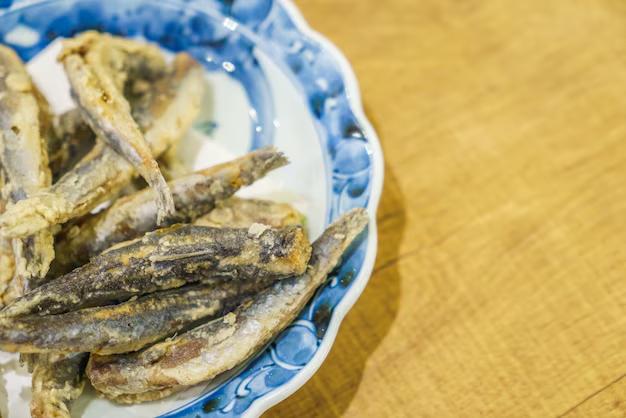How Long Can You Keep Fried Fish Fresh in the Fridge?
Ever had that moment when you're staring at the leftovers in your refrigerator wondering, "Is this still good?" If you're reading this, chances are there's a piece of fried fish sitting in your fridge right now, awaiting its fate. Understanding how long you can safely store fried fish in the refrigerator is crucial for both your health and ensuring you savor that crispy, flavorful experience once again.
🐟 Understanding Fish Shelf Life
The shelf life of fried fish, like many perishable foods, depends on several factors. Let's explore what keeps fried fish fresh and what doesn't.
Factors Affecting Shelf Life
Type of Fish: Different fish types have varying storage life. Oily fish like salmon may spoil quicker than lean fish.
Preparation Method: Properly deep-fried fish versus shallow fried might have differences in preservation due to moisture levels.
Cooling Time: The time taken to cool the fish before refrigeration is crucial. Ideally, it should be cooled and stored within two hours.
General Guidelines
After frying, fish can be stored in the refrigerator for up to 3 to 4 days. However, quality is best when consumed sooner rather than later.
👨🍳 Tip: Promptly refrigerating fried fish can help in maintaining its texture and flavor.
Safe Storage Practices
Maintaining freshness isn't solely about how you store the fish but also about how you prepare it for storage.
Pre-Refrigeration Steps
Cool Down Quickly: Allow the fried fish to cool at room temperature but avoid leaving it out longer than two hours.
Storage Containers: Use airtight containers or wrap tightly with aluminum foil or plastic wrap. This helps in preventing cross-contamination and retains moisture.
Refrigerate Promptly: Place the wrapped fish into the fridge promptly to minimize bacterial growth.
Proper Storage Techniques
Compartment Choice: Store in the coldest area of your fridge, ideally in the main compartment rather than the door.
Layer Protection: For extended freshness, consider using layers of paper towels inside the storage container to absorb excess oil and moisture.
Effective Practices for Frying and Storing Fish
| Task | Recommendation |
|---|---|
| Cool Down | Allow cooling to room temperature within 2 hours |
| Use Airtight Containers | Prevents contamination and moisture retention |
| Store in Coldest Part | Main compartment, not fridge door |
| Use Paper Towels | Absorbs excess oil and maintains texture |
🥶 Freezing Fried Fish: An Option?
If you find yourself unable to consume your fried fish within the recommended timeframe, freezing is a viable option.
How to Freeze
Initial Cool Down: Ensure the fish is completely cooled to room temperature.
Proper Wrapping: Use heavy-duty aluminum foil or freezer paper to wrap each piece individually.
Avoid Ice Crystals: Consider vacuum sealing if possible, as it minimizes air and potential for freezer burn.
Labeling: Use labels to mark freezing date to keep track.
Storage Duration
Frozen fried fish maintains its quality for up to two months. Beyond this, while still safe to eat, the quality and taste may diminish.
🍳 Reheating Tips
Thawing: For best results, defrost in the refrigerator overnight.
Reheating Method: Use an oven or air fryer for uniform heating and re-crisp the exterior.
🔍 Identifying Spoiled Fried Fish
Even with best intentions, food can sometimes spoil. Here's what to watch for:
Signs of Spoilage
Odor: A strong, sour, or fishy smell indicates spoilage.
Texture: Slimy or overly dry texture suggests bacteria growth or drying out.
Appearance: Discoloration or any unexpected spots may be a warning sign.
Health Considerations
Consuming spoiled fish can lead to food poisoning. Symptoms could include nausea, vomiting, diarrhea, stomach cramps, and fever.
🤔 Considerations for Sustainability and Waste Reduction
Reducing food waste and practicing sustainability can go hand in hand with safe food storage.
Practical Tips
Portion Control: Cook only what you can consume within the safe timeframe.
Creative Leftovers: Repurpose leftover fried fish into other dishes such as fish tacos, salads, or stir-fries.
Environmental Impact
Focusing on reducing food waste contributes to lower environmental impact. From reducing methane emissions due to decomposing waste to better resource utilization, thoughtful storage and leftovers management play a part.
✨ Key Takeaways
Refrigerated Shelf Life: Store fried fish for up to 3-4 days.
Freezing Extension: Freeze if not consumed, for up to two months.
Safe Practices: Rapid cooling, proper wrapping, and airtight storage are key.
Spoilage Detection: Trust your senses — smell, texture, and appearance are telltale signs.
Waste Reduction: Effective portion control and creative repurposing help minimize waste.
Implementing mindful storage habits not only ensures safety and quality but also fosters a more sustainable and enjoyable way of cooking and consuming food. So go ahead, savor every bite of your fried fish with confidence and creativity! 🐟✨
